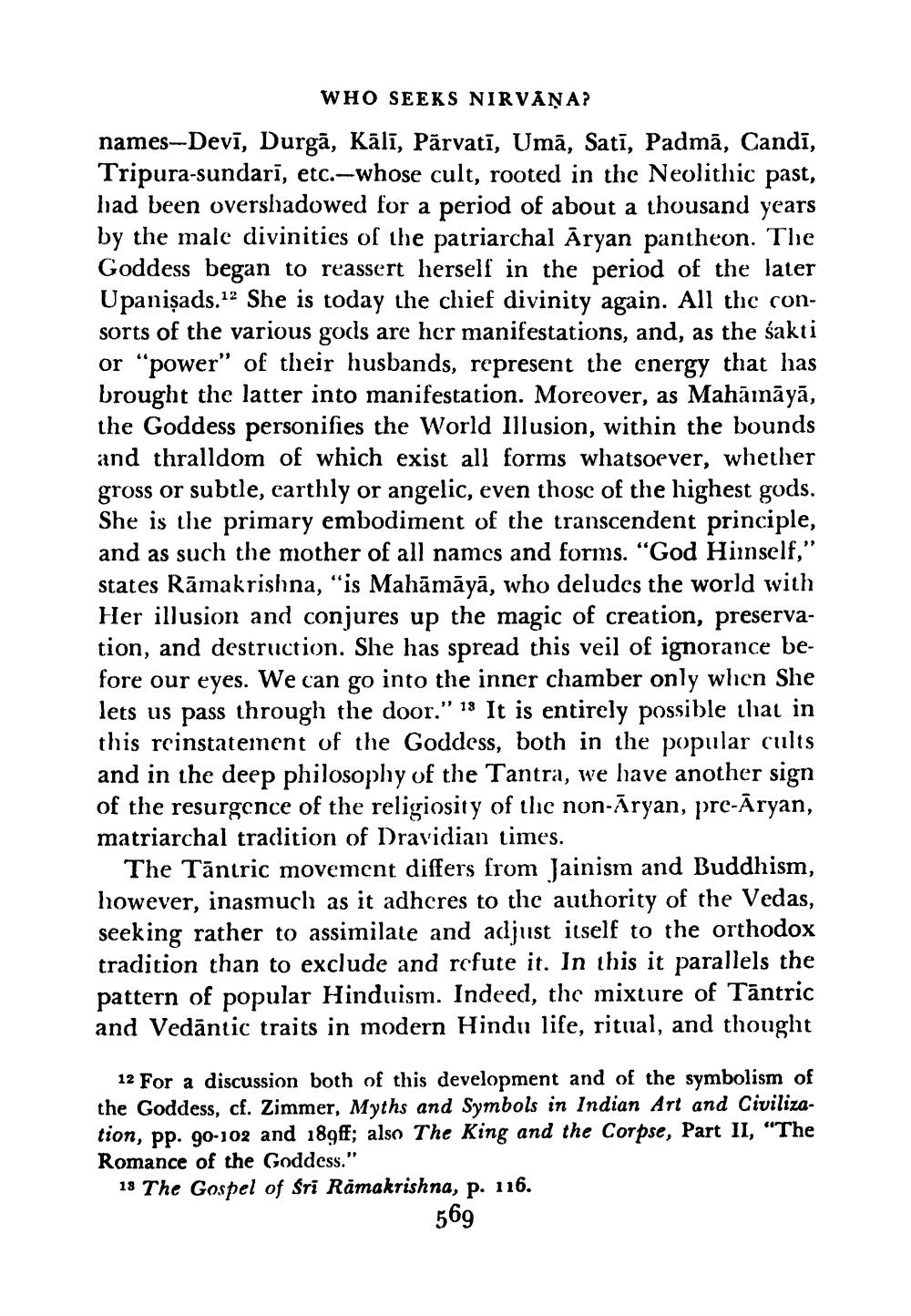________________
WHO SEEKS NIRVANA?
12
names-Devi, Durgā, Kālī, Pārvatī, Umā, Satī, Padmā, Candī, Tripura-sundari, etc.-whose cult, rooted in the Neolithic past, had been overshadowed for a period of about a thousand years by the male divinities of the patriarchal Aryan pantheon. The Goddess began to reassert herself in the period of the later Upanisads. She is today the chief divinity again. All the consorts of the various gods are her manifestations, and, as the śakti or "power" of their husbands, represent the energy that has brought the latter into manifestation. Moreover, as Mahāmāyā, the Goddess personifies the World Illusion, within the bounds and thralldom of which exist all forms whatsoever, whether gross or subtle, earthly or angelic, even those of the highest gods. She is the primary embodiment of the transcendent principle, and as such the mother of all names and forms. "God Himself," states Rāmakrishna, "is Mahāmāyā, who deludes the world with Her illusion and conjures up the magic of creation, preservation, and destruction. She has spread this veil of ignorance before our eyes. We can go into the inner chamber only when She lets us pass through the door." 18 It is entirely possible that in this reinstatement of the Goddess, both in the popular cults and in the deep philosophy of the Tantra, we have another sign of the resurgence of the religiosity of the non-Aryan, pre-Aryan, matriarchal tradition of Dravidian times.
The Tantric movement differs from Jainism and Buddhism, however, inasmuch as it adheres to the authority of the Vedas, seeking rather to assimilate and adjust itself to the orthodox tradition than to exclude and refute it. In this it parallels the pattern of popular Hinduism. Indeed, the mixture of Tantric and Vedantic traits in modern Hindu life, ritual, and thought
12 For a discussion both of this development and of the symbolism of the Goddess, cf. Zimmer, Myths and Symbols in Indian Art and Civilization, pp. 90-102 and 189ff; also The King and the Corpse, Part II, "The Romance of the Goddess."
18 The Gospel of Sri Ramakrishna, p. 116.
569




